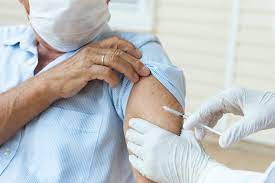Doppelgangers and DNA
- Mahi Mahitcha

- Aug 28, 2022
- 2 min read
Human lookalikes could have shared genes, says a recent study.
In the study, facial recognition software identified people to be lookalikes, and researchers analyzed their genomes to compare the DNA between them. In addition, they also looked at epigenomes and microbiome profiles.
A person’s genome is their complete set of genes, in which all hereditary characteristics are encoded with different DNA sequences. The human genome consists of around 20,0000 to 25,000 genes.
These genes can be turned on and off by proteins and other chemical compounds that attach to parts of DNA, which are known as the epigenome.
Additionally, a person’s microbiome profile is a collection of communities of bacteria that reside in their body.

The researchers assigned 32 pairs of identified lookalikes by running their faces through three different facial recognition algorithms (Microsoft, one from a security company, and one for academic use). The three algorithms were unable to distinguish two faces from each other for most of the pairs, which verified that they were objectively “virtual twins”.
Next, they looked at molecular factors that influenced the makeup of participants’ faces, determining the DNA sequence, methylation status, and content of bacteria & viruses in an oral swab for each person. After analysis, researchers found that 9 out of 16 pairs shared very similar DNA with all of them having 3730 genes in common. Most of these genes were linked to skin, bone properties, and facial features.
So, how does this connect to unrelated people sharing the same DNA? This concept is not new, and has been around for several years.
In 2005, it was found by the Carreras Leukemia Institute that identical twins shared the same DNA, but had slight differences in traits such as disease susceptibility.
The new study aims to utilize the genome, epigenome, and microbiome profiles of people who have a strong facial similarity but aren’t related by blood to compare various traits. It was found that these lookalikes were like twins in that they had similar genetic sequences, though they diverged in their epigenome and microflora.
The genetic similarity also caused personality traits and physical features of unrelated lookalikes to resemble each other. Traits such as height, weight, education level, and smoking habits were found to be correlated in these pairs, which suggests that behavior can be influenced by a shared genome.
In the real world, this study could potentially have applications in fields such as forensic medicine and give insight into the genetics of human facial features.



Comments